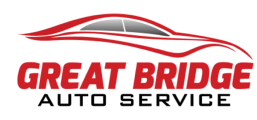Power steering. It’s one of the automobile’s great evolutions. Being little more than a boat tiller when first designed, it has advanced to becoming the central hub for dashboard activity in many vehicles today. Through steering’s many adaptations, power steering is by far the most transformative.
Developed in the 1920s, it wasn’t until WWII that power steering was thought to be not only practical but a necessity. The heavy military equipment needed for the war was nearly impossible to steer, but the creation of power steering made maneuverability easy work. It wasn’t until 1951 that Chrysler saw the importance of power steering and incorporated it into their automobile designs. Our arms greatly thank you, Fiat Chrysler Corporation!
If your power steering experiences problems, the technicians at Great Bridge Auto Service are here to help.
Common Questions
What are signs of steering system problems?
- Vehicle pulls to one side when driving.
- Steering feels like it is slipping.
- Steering wheel is hard to turn.
- Steering wheel vibrates.
- Vehicle makes screeching sounds when turning steering wheel.
What are the jobs of the steering system?
- Transfer the movement of the steering wheel to the tires
- Provide “road feel”
- Keep wheels in contact with the road
What are the two types of steering systems?
-
Rack and pinion:
This system is the most common. It takes the circular movement of the steering wheel and changes it to a linear movement so the wheels can turn.
System Advantages:
- Easier to turn wheel
- Better steering response and “feel”
- Easier to fix when broken
System Disadvantages:
- More apt to leak
- May have more “road noise”
- May have vibrations in steering wheel
-
Conventional steering (parallelogram steering): This system is typically found on older model vehicles or on today’s larger cars and trucks. It has a number of grease fittings and has several parts not found in the rack and pinion system: pitman arm, relay rod and idler arm.
System Advantages:
- Wheels stay in better alignment (minimizes “toe” change)
System Disadvantages:
- More complicated system with more parts that can “wear” out
- More expensive
- Heavier
